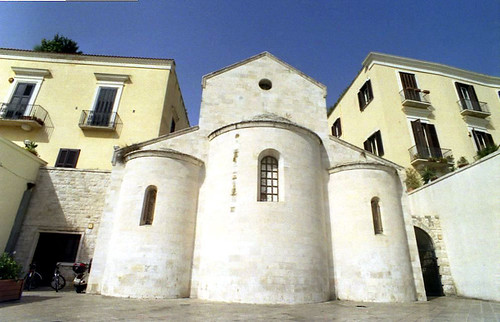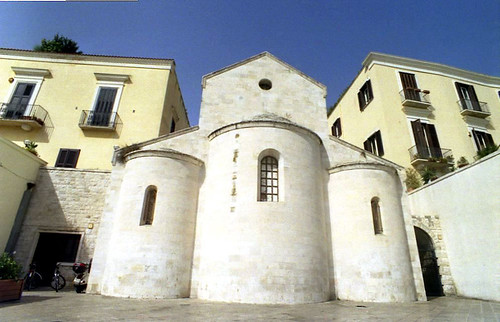
La Chiesa Della Vallisa

Bari Vecchia, chiesa della Vallisa, (foto di Gigi Scorcia is licensed under CC BY 2.0 )
<p style=”font-size: 0.9rem;font-style: italic;”><a href=”https://www.flickr.com/photos/7994827@N03/2847030066″>”in giro di domenica con 38°C all’ombra”</a><span>by <a href=”https://www.flickr.com/photos/7994827@N03″>Gigi Scorcia</a></span> is licensed under <a href=”https://creativecommons.org/licenses/by/2.0/?ref=ccsearch&atype=html” style=”margin-right: 5px;”>CC BY 2.0</a><a href=”https://creativecommons.org/licenses/by/2.0/?ref=ccsearch&atype=html” target=”_blank” rel=”noopener noreferrer” style=”display: inline-block;white-space: none;opacity: .7;margin-top: 2px;margin-left: 3px;height: 22px !important;”><img style=”height: inherit;margin-right: 3px;display: inline-block;” src=”https://search.creativecommons.org/static/img/cc_icon.svg” /><img style=”height: inherit;margin-right: 3px;display: inline-block;” src=”https://search.creativecommons.org/static/img/cc-by_icon.svg” /></a></p>
La chiesa della Vallisa è una piccola basilica romanica, fatta costruire dalle comunità di mercanti Ravellesi e Amalfitani presenti in città nel Medioevo. Il nome Vallisa deriva infatti dalla parola dialettale Raveddise, cioè il termine con cui i baresi chiamavano i mercanti di Ravello. Le tre absidi semicircolari, che caratterizzano il retro della chiesa, si affacciano in piazza del Ferrarese.
L’edificio, risalente all’XI secolo, ha la sua entrata in strada Vallisa, uno dei piccoli e caratteristici vicoli che intersecano il centro storico di Bari Vecchia. La facciata è preceduta da un profondo portico a tre arcate. L’interno presenta un semplice impianto basilicale a tre navate terminanti in altrettante piccole absidi. Questo luogo, molto diverso da come doveva presentarsi in passato, ha conservato un fascino austero e mistico. Oggi è una chiesa sconsacrata adibita ad auditorium diocesano nel quale hanno luogo numerose manifestazioni musicali.
